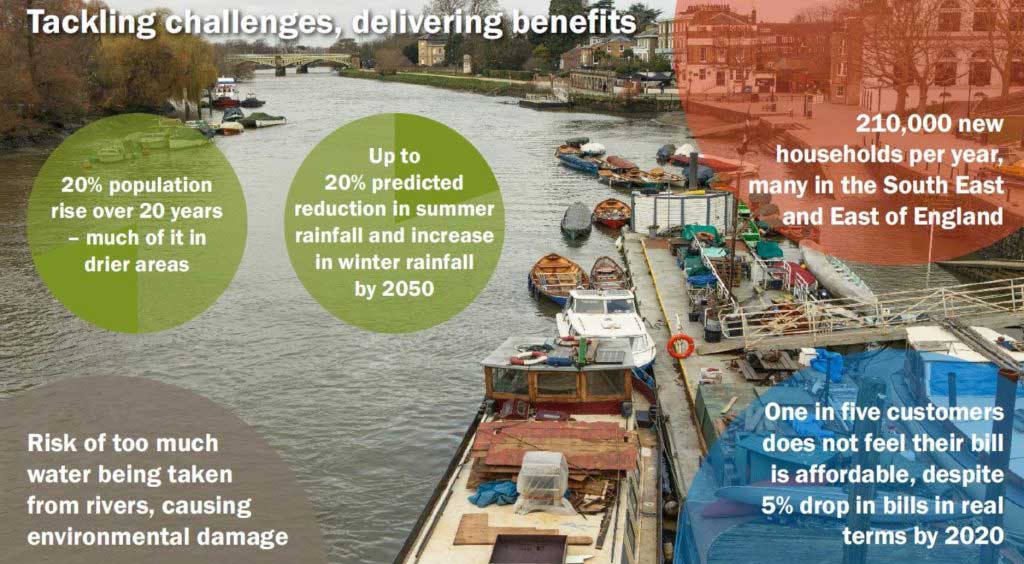As we look to the future, we have identified long-term, large environmental and socio-economic shifts that could have a big impact on the water sector in England and Wales.
We know that climate change is going to have a significant impact on the water sector, though due to its inherently unpredictable nature, we do not know to what extent. There are trends towards warmer, drier weather, which could impact water security, particularly in the south-east. Yet, there is also a high likelihood of more extreme weather, meaning a greater risk of floods and droughts.
We also know that the population is growing. There are projections that suggest the UK population could grow by upwards of 10 million people over the next 20 to 30 years. Compounding this issue from our sector’s perspective is the fact that most are expected to live in the most water stressed areas, particularly the south-east of England.
As water becomes an increasingly scarce resource, and becomes more expensive to supply, there is a risk that affordability will also suffer. This could exacerbate the long-term squeeze on living standards associated with a rising cost of living, and falling real incomes.
The main way water companies have met demand in the past has been through supply-side measures – taking more water from the environment, and building infrastructure to store it. But this isn’t without its problems. Abstracting water from the environment can damage habitats, and building infrastructure is expensive.
Yet, the demand side could play an important role in securing water supplies, protecting the environment, and saving customers money. Over the past decade, we have seen a slight reduction in the amount of water that people use –from a historic high of 155 litres to 140 litres, per person, per day, but it needs to drop even more. Through this study, we are asking how big this role would be, and what change is needed to make it happen.
With a fifty-year time horizon, we can afford to look beyond the current constraints, to think about the deep reductions that consumers could make, if we all work together. As well as being an important resource for our future price reviews – and to an extent the one that’s gearing up now, we hope that this study provokes discussion in the sector.
